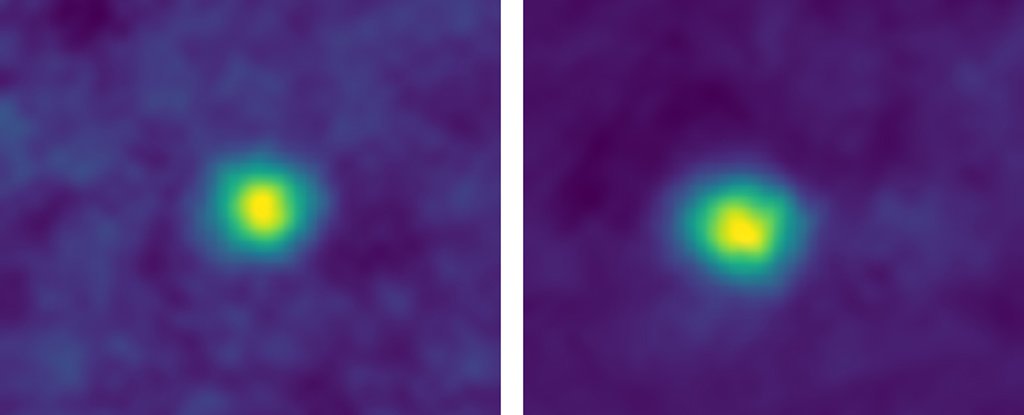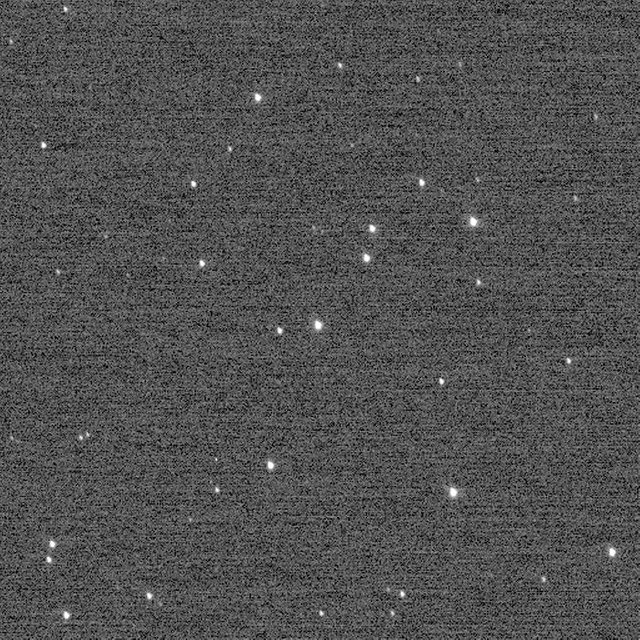
The NASA New Horizons test simply set another interstellar investigation record, taking pictures from farther in space than at any other time – it snapped the shots you see over somewhere in the range of 6.12 billion kilometers (3.79 billion miles) far from Earth.
That is around 6 million kilometers (3.7 million miles) farther than the Voyager 1 shuttle was the point at which it caught the popular Pale Blue Dot picture of Earth in 1990. Since Voyager 1's cameras were killed soon after that shot was taken, the record has remained for as far back as 27 years.
The new record-breaking photographs demonstrate two Kuiper Belt objects, 2012 HZ84 and 2012 HE85. As fluffy as they seem to be, they're the nearest look we've ever got at any items inside this huge frosty ring, which circles the Sun around 30 to 55 times farther than Earth.
"New Horizons has for quite some time been a mission of firsts – first to investigate Pluto, first to investigate the Kuiper Belt, quickest shuttle at any point propelled," says New Horizons Principal Investigator Alan Stern, from the Southwest Research Institute in Boulder, Colorado.
"What's more, now, we've possessed the capacity to make pictures more distant from Earth than any shuttle ever."
Truth be told, New Horizons softened the record twice up speedy progression, first snapping a dose of a gathering of far off stars called the Wishing Well, around 1,300 light-years from our planet. That was caught up with the shots of the Kuiper Belt two hours after the fact.
These photographs were caught in December by the Long Range Reconnaissance Imager (LORRI) on board New Horizons, and were shot just before it backpedaled into hibernation.
New Horizons first left Earth in 2006 with the point of flying by Pluto, which it did in 2015, taking some sensational photographs en route. From that point forward it's been heading into the Kuiper Belt, and will complete a flyby of Kuiper Belt protest (KBO) 2014 MU69 in January 2019.
At that point 2014 MU69 ought to have a catchier name joined to it – NASA is requesting proposals.

The test keeps on covering around 1.1 million kilometers or 700,000 miles of profound space each day, and is just the fifth man-made protest ever – after Pioneer 10, Pioneer 11, Voyager 2, and Voyager 1 – to be on course to fly past the ranges of our Solar System.
As any individual who's at any point endeavored to keep a camera enduring will know, taking pictures at that speed is an amazing accomplishment.
Before we in the long run put some distance between New Horizons, it's trusted that it will disclose to us bounty more about the Kuiper Belt. The test is estimating levels of plasma, tidy, and gases as it ventures, and will in the long run investigate more than 20 different KBOs.
New Horizons will get pushed out of hibernation again on the fourth of June. Meanwhile, we can wonder about these record-breaking profound space photos.